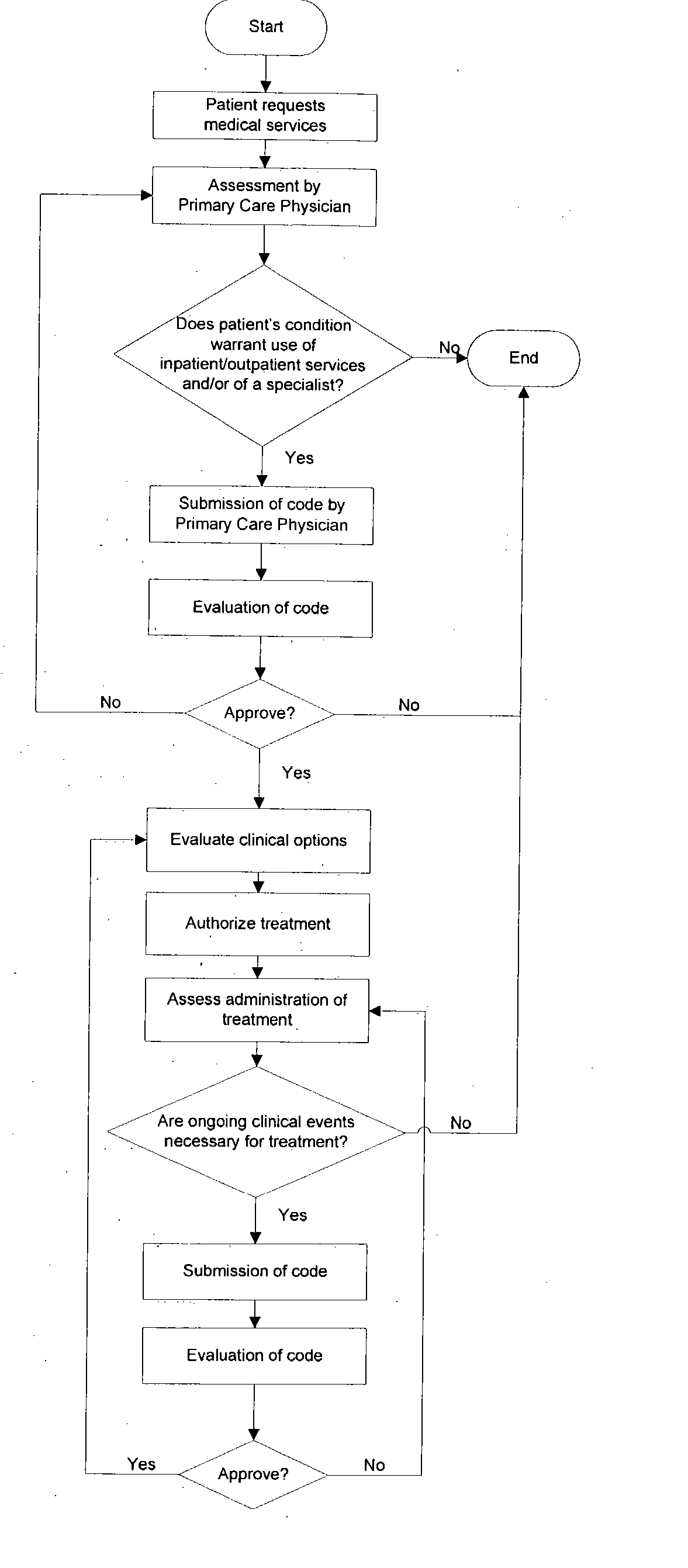As is well known, the utilization of health care resources has and continues to be grossly inefficient.
Generally, the current administration of health care in the United States is subject to tremendous abuse, both by patients, on one hand, and health care providers and health care providing institutions, on the other.
Problematic with such practice, however, is that often times health care providers and health care providing institutions attempt to seek reimbursement, whether it be from an insurance company,
health maintenance organization or government sponsored health
care program, such as MediCare, for two or more separate services that are actually integrated into one clinical event.
Other well-known abuses occur when health care providers and institutions attempt to seek reimbursement for procedures and tests that are performed by non-physicians, such as nurses or technicians performing such procedures but seek reimbursement for the services of a physician.
Additionally wasteful practices include duplicative and unnecessary tests and procedures.
Likewise, many such procedures and tests are performed in an in-patient facility, as opposed to an out-patient facility, which thus substantially increases the costs associated with the applicable service.
Furthermore, there is a tendency among health care providers and institutions to render care that fails to take into account lower cost alternatives that utilize cost-effective out-patient facilities, and / or competitive pricing practices that eliminate or substantially limit the utilization of specialists, the performance of unnecessary tests, excessive
office visits, and the like.
In addition to health care providers and institutions, patients themselves contribute substantially to the cost and ineffective utilization of health care resources.
As is well-known, patients can and frequently do seek unnecessary
medical treatment or otherwise attempt to influence the judgment of the health care provider by demanding that unnecessary tests or procedures be performed, that the patients have access to specialists or particular medications, and / or seek in-patient services in situations where the patient's clinical condition clearly does not justify such
level of care.
Such potential abuses are particularly likely where patients are allowed the discretion to directly access specialists, as is typical in several well-known health care insurance plans, such as Blue Cross and Blue Shield, which thus bypasses the critical role played by the
primary care physician in making an initial assessment of a patient's condition and whether the same truly warrants the attention of a particular specialist, and not to mention the specialist best suited to
handle a particular condition.
Despite such attempts, however, there has yet to be devised any type of health care administration
system or method that substantially conserves utilization of health care resources that as a consequence can dramatically lower the costs associated in providing care to a specific patient population.
Such attempts have likewise failed to maintain any degree of consistent quality of health care insofar as prior art cost containment practices have been and continue to be riddled with “loopholes” and insufficient cost-deterrent mechanisms necessary to conserve and optimally utilize a finite amount of health care resources.
As a result of the aforementioned abuses and inefficiencies associated with the utilization of health care resources, the cost of health care has and continues to increase substantially while the quality of the health care provided has not necessarily improved.
 Login to View More
Login to View More  Login to View More
Login to View More 


